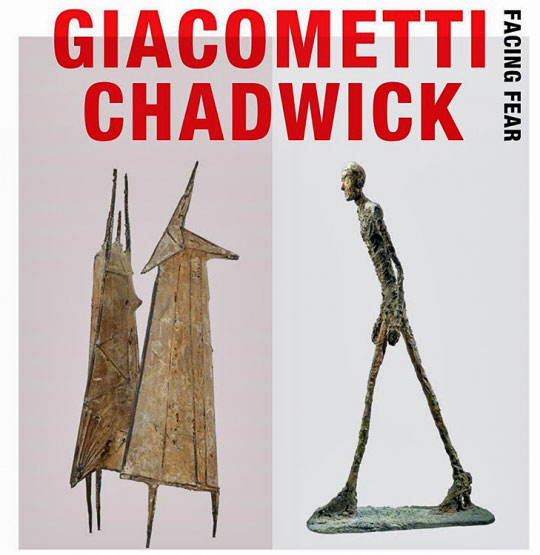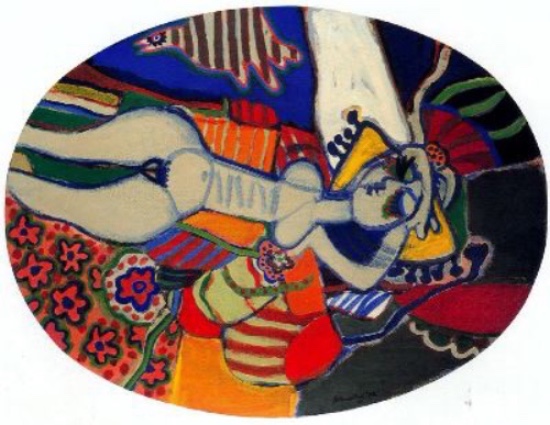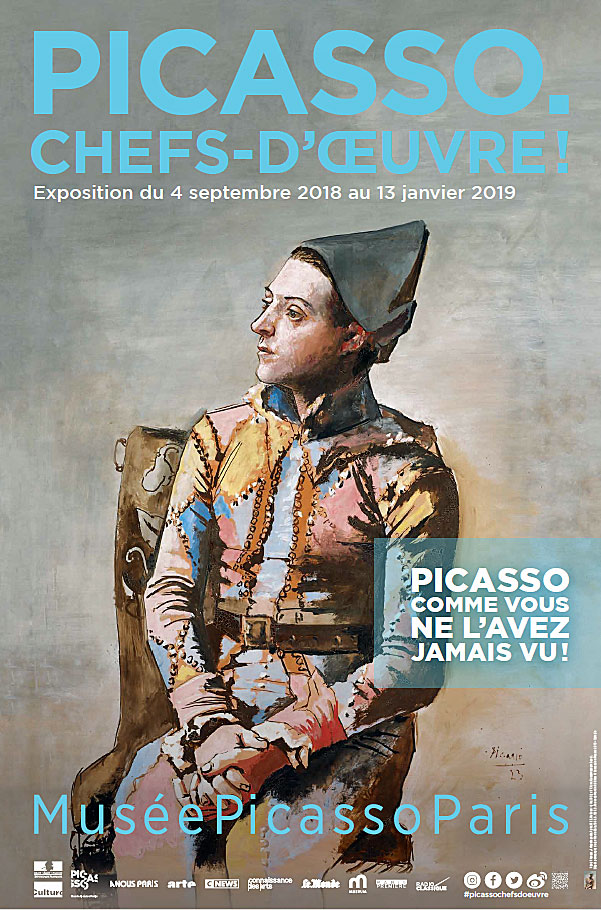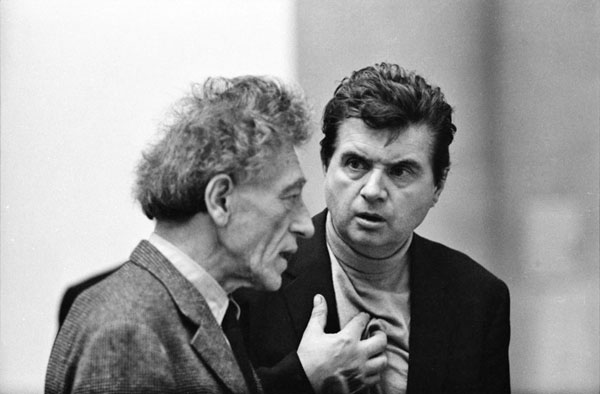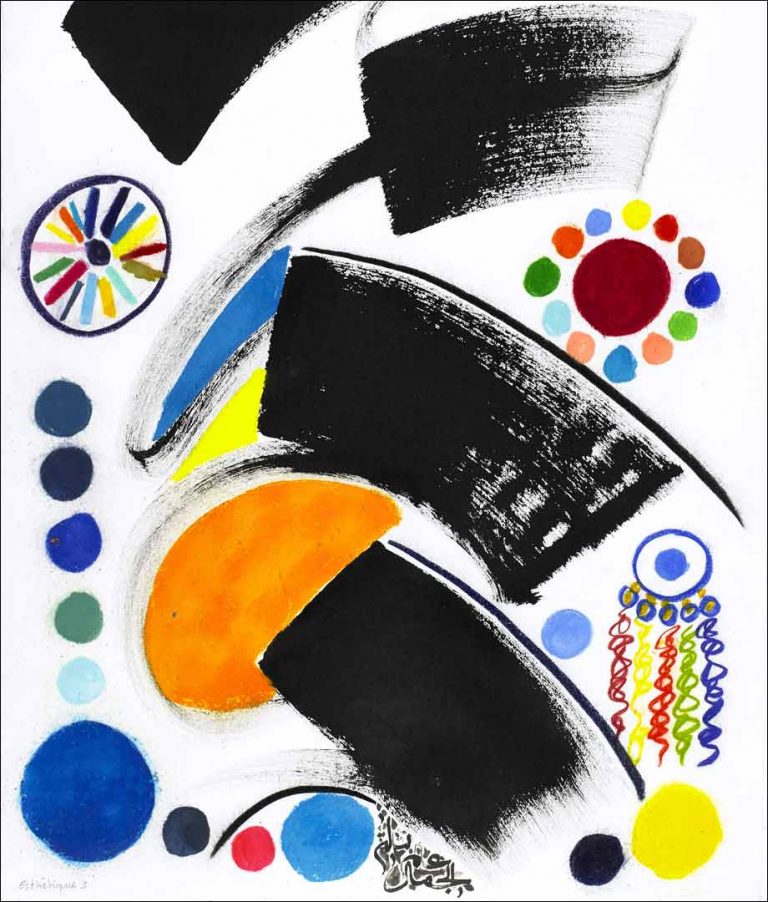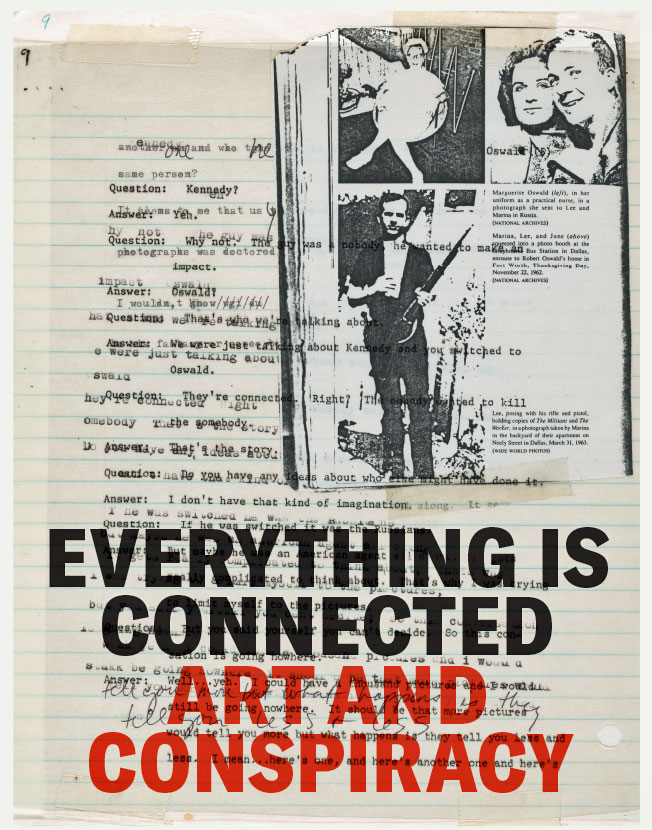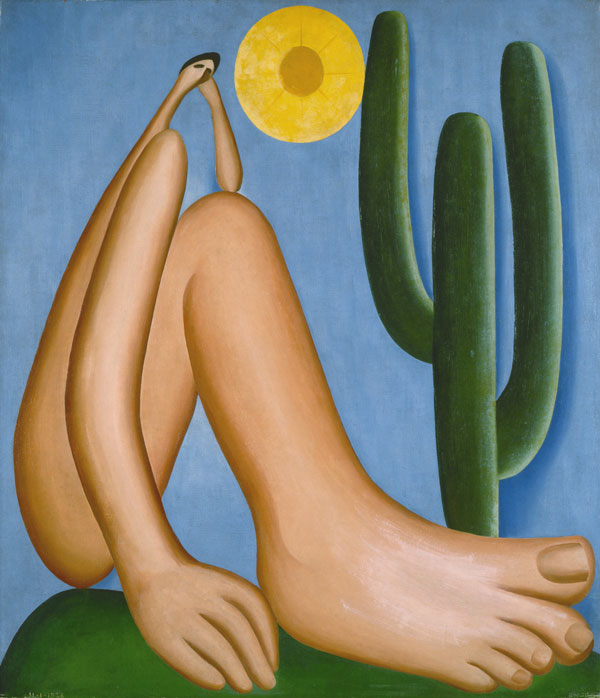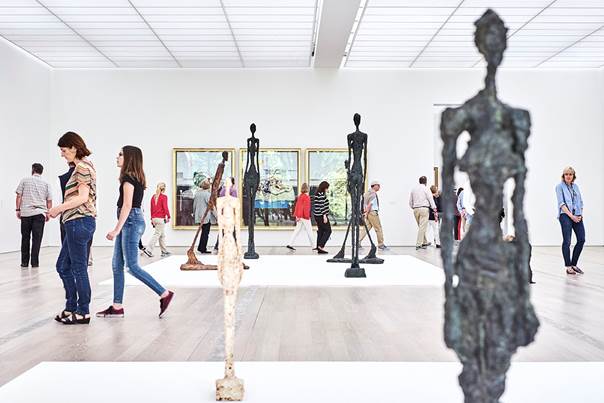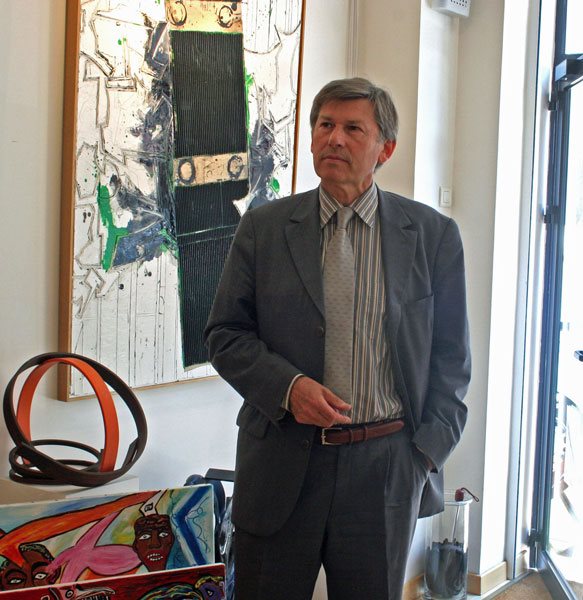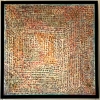|
DECONSTRUCTING MARCUS JANSEN Marcus Jansen (American, b. 1968) finds inspiration in the world around him. Regarded as a pioneer of "urban landscape painting," Jansen uses his upbringing in both the United States and Germany, and places he was stationed during his time in the army, as influence for his paintings. Drawing inspiration from New York Abstract Expressionism as well as graffiti, Pop art, and Surrealism, Jansen employs practices from these art forms to create paintings that make social commentary. This exhibition places the techniques and themes in Jansen's work in dialogue with other paintings, photographs, and prints from the Kemper Museum Permanent Collection. |
 |
Berenice ABBOTT Musée de la Photographie Charles Nègre Nice
|
Exposition Berenice ABBOTT - Topographies Vernissage > Jeudi 18 octobre 2018 à 19 heures En présence de Robert Roux, Conseiller municipal délégué au Cinéma, aux Arts dans l’Espace Public, au Pôle de Culture Contemporaine « Le 109 », Subdélégué aux Musées et aux Musiques Actuelles, représentant Christian Estrosi, Maire de Nice, Président de la Métropole Nice Côte d’Azur, Président délégué de la Région SUD-Provence-Alpes-Côte d’Azur Musée de la Photographie Charles Nègre L’œuvre de Berenice Abbott (Springfield, USA, 1898 - Monson, USA, 1991) a été décisive et déterminante dans l’Histoire de la Photographie puisqu’elle contribuera à définir une nouvelle conception de ce langage. Autonome parce que délestée de toute référence à la peinture, elle existe alors strictement de et par ses propres spécificités intrinsèques. Venue à Paris au début des années 1920, formée par Man Ray (Philadelphie, USA, 1890 - Paris, 1976) avant d’ouvrir son propre studio, Berenice Abbott entame avec succès une carrière de portraitiste. Connue, dans les cénacles de l’avant-garde de Paris et New York, des années 20 et 30, pour être une fervente militante en faveur de la reconnaissance de la photographie documentaire comme un art, elle n’aura de cesse de questionner dans son travail, les aspects de réalisme et modernisme. Son œuvre phare et manifeste, représentative de ces préceptes et engagements sera Changing New York (1935 – 1939), vaste entreprise « d’interprétation documentaire » des mutations architecturales auxquelles sera soumise New York dans les années 1930. Par ailleurs, la figure de Berenice Abbott apparaît à nouveau dans l’Histoire de la Photographie indissociable, et réciproquement d’ailleurs, de celle d’Eugène Atget (Libourne, France, 1857 – Paris, 1927) dont elle aura activement contribué à la reconnaissance de l’œuvre en Europe et aux États-Unis. Atget, photographe français, rendra compte dès 1890 d’un Paris qui disparaît après la mise en place des grands chantiers Haussmanniens dès la deuxième moitié du XIXe siècle, visant à faire de Paris une ville moderne à l’image de Londres. Atget restera une figure emblématique et de référence pour Berenice Abbott. Son œuvre, qui la précède en est l’amorce, celle d’Abbott, sa résonance. Dans son ensemble et de manière panoramique, l’œuvre de Berenice Abbott revêt des aspects protéiformes. Il n’en demeure pas moins que les déplacements de ses problématiques et intérêts tout au long de sa carrière depuis la photographie de portrait, puis d’architecture et enfin scientifique, s’effectuent avec logique et cohésion. Elle s’attachera à examiner le langage photographique à travers un prisme, lui donnant une autre dimension et profondeur. Avec une présentation d’une centaine de photographies et documents, le Musée de la Photographie Charles Nègre offre aux visiteurs un aperçu de l'œuvre de cette artiste majeure. |
Flatiron Building, Madison Square, New York, 1938 |
LOUIS VUITTON CELEBRATES ROME WITH THE ROME BY MILES HYMAN EXHIBITION
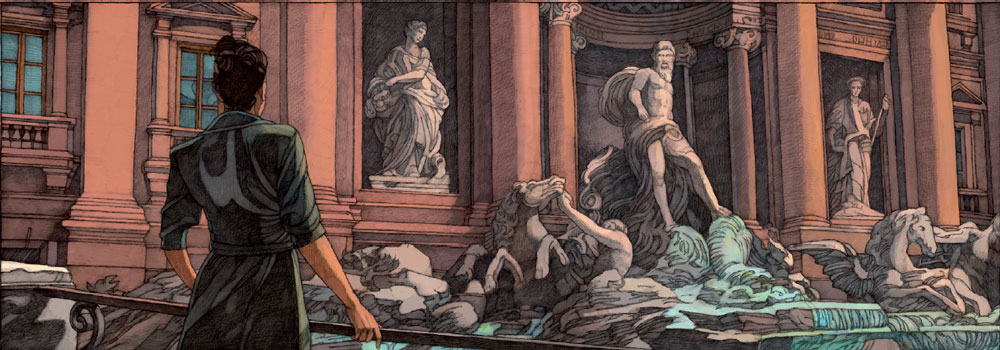 |
|
ROME BY MILES HYMAN Hyman spent his days in the city with eyes turned towards the Roman sky, focused on an architectural detail, on a face, a door in Trastevere or on the dome of a church in Piazza Navona, with the aim of depicting Rome for the Louis Vuitton Travel Book: Rome by Miles Hyman. The result is an invitation towards the real and virtual journey, enriched by intellectual stimulations and intense moments, which gives the readers an unprecedented image of the city. |
GIACOMETTI-CHADWICK FACING FEAR Museum de Fundatie Zwolle
|
GIACOMETTI-CHADWICK, FACING FEAR Du 22 septembre 2018 au 6 janvier 2019, le musée néerlandais Museum De Fundatie organise l’exposition Giacometti-Chadwick, Facing Fear. Les sculptures d’Alberto Giacometti (1901-1966) et de Lynn Chadwick (1914-2003) incarnent la désillusion et l’angoisse qui ont profondément marqué l’Europe pendant la période de la Guerre Froide. |
 |
Retrospective exhibition devoted to Corneille Schiedam Museum
Picasso Chefs-d'Oeuvre Musée Picasso
|
Picasso - Chefs-d'Oeuvre Musée Picasso Quel sens a la notion de chef-d’œuvre pour Pablo Picasso ? L’exposition « Picasso. Chefs-d’œuvre ! » répond à cette question en réunissant des œuvres maîtresses, pour certaines présentées à Paris pour la première fois. Grâce à des prêts exceptionnels, des chefs-d’œuvre du monde entier dialogueront avec ceux du Musée national Picasso-Paris.
1. LE CHEF-D'OE UVRE INCONNU |
 |
Bacon Giacometti Fondation BEYELER Suisse
|
Bacon – Giacometti 29 avril – 2 septembre 2018 Avec Alberto Giacometti et Francis Bacon, la Fondation Beyeler présente à partir du 29 avril 2018 deux protagonistes d’exception de l’art moderne, tant amis que rivaux, dont la vision a fortement influencé l’art de la deuxième moitié du 20ème siècle à aujourd’hui. C’est la toute première fois qu’un musée consacre une exposition conjointe à ces deux artistes, éclairant leurs rapports et leurs relations. Aussi différentes que leurs oeuvres puissent sembler à première vue, ce face-à-face inattendu fait apparaître des correspondances surprenantes. L’exposition comprend des oeuvres célèbres des deux artistes, complétées par des oeuvres rarement exposées. A noter plus particulièrement, une série de plâtres originaux en provenance de la succession de Giacometti jamais encore dévoilés au grand public, ainsi que quatre grands triptyques de Bacon. Une salle multimédia propose des aperçus spectaculaires des ateliers des deux artistes. L’exposition est organisée par la Fondation Beyeler en collaboration avec la Fondation Giacometti, Paris. Le peintre britannique et le sculpteur suisse se sont rencontrés au début des années 1960 au travers d’une amie commune, l’artiste Isabel Rawsthorne. En 1965, leur relation était déjà telle que Bacon avait rendu visite à Giacometti à la Tate Gallery à Londres lorsque ce dernier y installait son exposition. Une série de clichés du photographe anglais Graham Keen documente cette rencontre, montrant les deux artistes en intense conversation. Plus d’un demi-siècle plus tard, les deux artistes sont réunis à la Fondation Beyeler et ce double portrait photographique ouvre l’exposition. |
Alberto Giacometti und Francis Bacon, 1965 Tirage gélatino-argentique © Graham Keen |
Exposition Lassaâd Metoui Institut du Monde Arabe
|
Le Pinceau ivre Lassaâd Metoui Du 11 avril au 30 septembre prochain, l’Institut du monde arabe donne carte blanche à l’artiste franco-tunisien, Lassaâd Metoui. Formé très jeune à la calligraphie, Lassaâd Metoui est devenu dans cette discipline traditionnelle un artiste majeur, tout en faisant évoluer son art de plasticien vers une modernité qui transcende les cultures. Il s’inspire tout autant de la peinture occidentale (de Matisse à Paul Klee ou à Soulages) que de l’art d’Extrême-Orient, notamment japonais. Riche de 135 oeuvres, l’exposition « Le Pinceau ivre » proposée par l’Institut du monde arabeoffre au visiteur un magnifique parcours dans l’oeuvre actuelle de Lassaâd Metoui. Ce beau panorama distribué en 4 séquences (« L’oeil écoute », « La Genese des formes », « La Passion de l’esthétisme », « L’Aventure du geste »), est significatif d’un art toujours empli d’allégresse, animé d’une sorte d’« ivresse poétique », curieux et admiratif des maîtres tant occidentaux qu’arabo-musulmans et tant d’hier que d’aujourd’hui. Le travail de Lassaâd Metoui a une place légitime dans les espaces du musée, à la fois par la pratique que l’artiste a d’une calligraphie sans cesse repensée, et par le lien qu’il entretient avec le langage, grâce à sa complicité avec le linguiste et lexicographe Alain Rey. |
Lassaâd Metoui, Accessible, 2014, Papier kozo, encre |
The Met Fifth Avenue Everything Is Connected Art and Conspiracy
Museum Of Modern Art New-York Exhibition of TARSILA DO AMARAL
|
THE FIRST MAJOR U.S. MUSEUM EXHIBITION OF TARSILA DO AMARAL Tarsila do Amaral: Inventing Modern Art in Brazil With Tarsila do Amaral: Inventing Modern Art in Brazil, The Museum of Modern Art presents the first monographic exhibition in the United States exclusively devoted to the pioneering work of Tarsila do Amaral (Brazilian, 1886–1973), a founding figure of Brazilian modernism. On view February 11 through June 3, 2018, the exhibition focuses on the artist’s production from the 1920s, tracing the path of her |
Tarsila do Amaral. Abaporu, 1928. Oil on canvas. |
La programmation de la Fondation Beyeler pendant Art Basel 2018
|
Pendant Art Basel, la Fondation Beyeler présente sa grande exposition estivale «Bacon – Giacometti», qui propose une densité impressionnante de chefs-d'œuvre de ces deux artistes d'exception. La nouvelle présentation de la collection placée sous le thème «Nature + Abstraction» s'accompagne d'un important groupe d'œuvres de l'artiste américain Brice Marden issu de la Daros Collection. Certaines acquisitions d'artistes plus jeunes, comme par exemple un grand dessin sur tableau de Tacita Dean ou un ensemble d'œuvres de l'artiste brésilien Lucas Arruda, sont montrées au musée pour la première fois. Le parc de la Fondation Beyeler accueille quant à lui «This You» de Tino Sehgal, œuvre appartenant à la collection du musée. Vendredi 15 juin, Hans Ulrich Obrist parlera avec Ernesto Neto de son installation monumentale GaiaMotherTree, présentée du 30 juin au 29 juillet 2018 à la gare centrale de Zurich. Ce projet dans l'espace public organisé par la Fondation Beyeler est accompagné d'une programmation riche et variée pour adultes et pour enfants comprenant musique, ateliers, visites et conférences. Au musée, l'artiste montre une sélection d'œuvres des années 1980 et 1990 ainsi que la sculpture Altar for a Plant (2017), conçue spécialement pour le Pavillon de la Fondation Beyeler. Samedi 16 juin de 13h00 à 14h00, dans le cadre du lancement du livre «Psychoanalytikerin trifft Marina Abramović», l'auteur et psychanalyste Jeannette Fischer s'entretiendra avec Marina Abramović, figure clé du performance art. Cet événement est déjà complet. Le Young Art Club de la Fondation Beyeler propose un programme éclectique «Art Basel Special», avec des visites guidées exclusives des différentes foires annexes d'Art Basel et une participation à divers événements associés. Rencontrer des artistes, visiter des foires, faire des découvertes en matière d'art et de design: le Young Art Club de la Fondation Beyeler propose tout ce qui constitue une parfaite semaine Art Basel. Pour en savoir plus: www.fondationbeyeler.ch/blog/young-art-club |
 |





